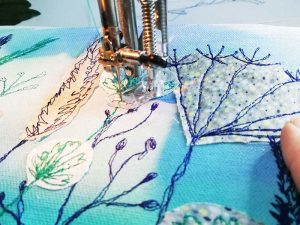
How to create textile art - let's get started
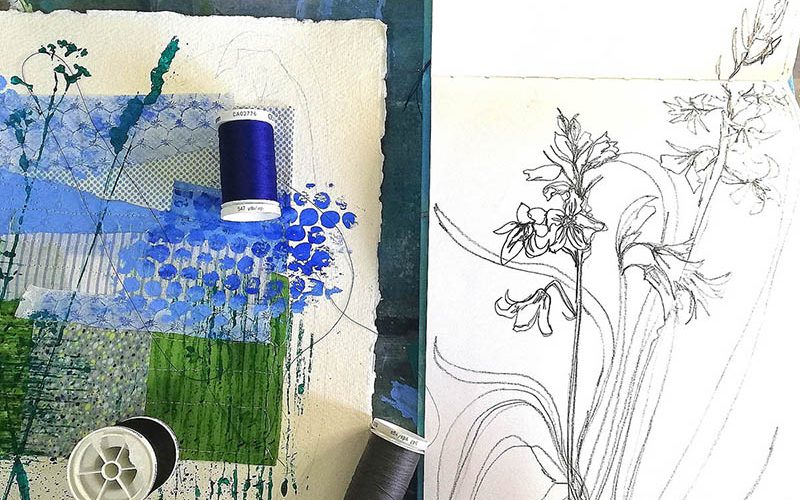
If you’re new to mixed media, and wondering how to create textile art, I hope you’re feeling excited.
Playing with paint, layering fabrics, stitching with thread – there are so many creative opportunities ahead of you!
Here, I’ve brought together all my top tips for getting started, particularly when it comes to your materials. So read on, and get ready for some mixed media fun.
There are many different approaches… here’s mine
Over years as a professional artist, I’ve developed my own nature-inspired way to create textile art.
It involves layering up abstract landscapes, painted directly onto raw cotton canvas, with imprints of natural finds.
I always add a layer of gorgeous embroidery – whether by hand or using a sewing machine – and often include appliqué or hand-painted collage.
Are you ready to find your own style?
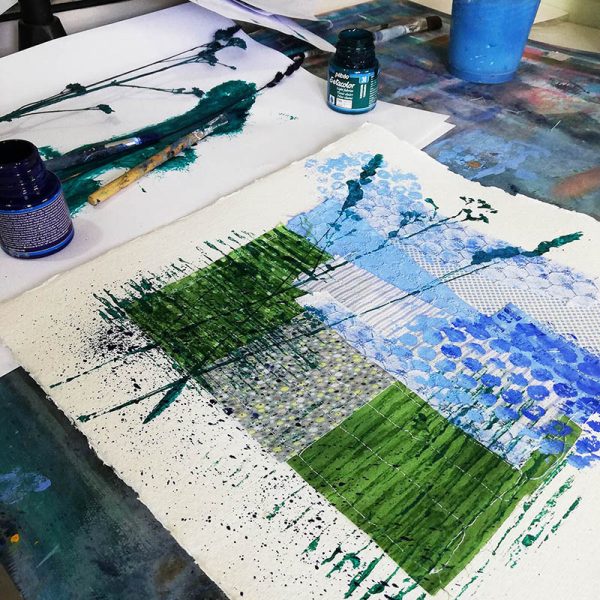
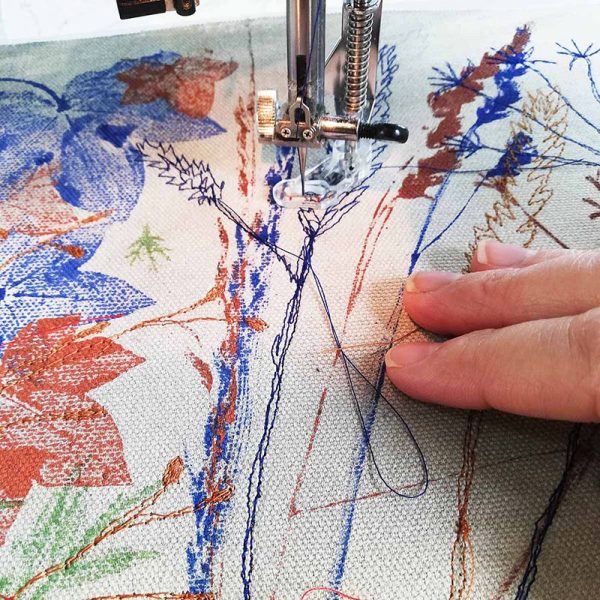
Top tips to get you started with textile art
It’s all about the base
It’s a delicious feeling, painting directly onto raw cotton canvas.
But to get a good effect you do need to be working on the right type of fabric. Otherwise it may shrink or buckle, or the colours may look dull.
I recommend a 260gm white cotton canvas. It works like a dream and I’ve been using it happily for years. If this sounds good, you can check out my recommended UK supplier list.
Getting to know fabric paints
Fabric paint is thinner than acrylic paint. It sinks in, rather than sitting on top, so your resulting artwork isn’t flaky and stiff. But it’s important to note that it only adheres to natural fibres – you won’t have much success if you use fabric paints on synthetic material.
The brand I recommend is Pebeo Setacolor. I mainly move between their opaque and ‘light fabrics’ range, but you can also try out their ‘suede’, ‘shimmer’ and ‘glitter’ finishes. These paints are fabulous, but they are an investment – perhaps a collection to build up over time.
A cheaper option is Memory fabric paints. They do a great starter pack if you just want to give it a try.
Another option is to buy a pot of something called ‘fabric medium’. It’s a thick liquid which, when mixed in, makes acrylic paint more flexible and adhesive. So you can use it on fabric.
Before you begin creating full pieces of textile art, have fun trying out these different types of paint, and discovering which you like working with.
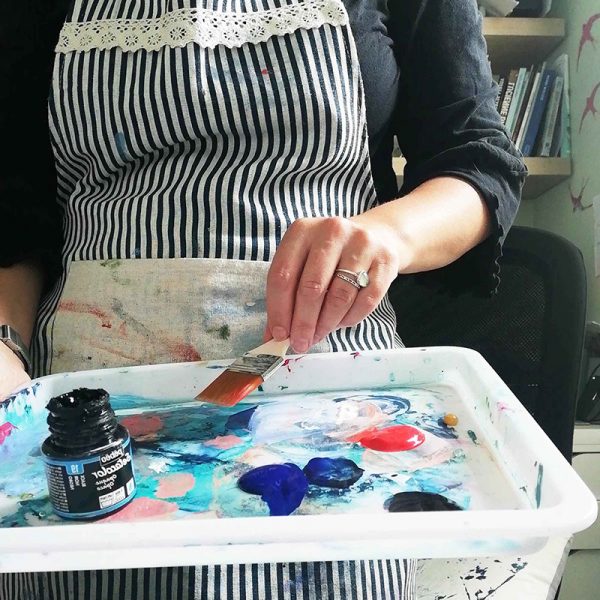
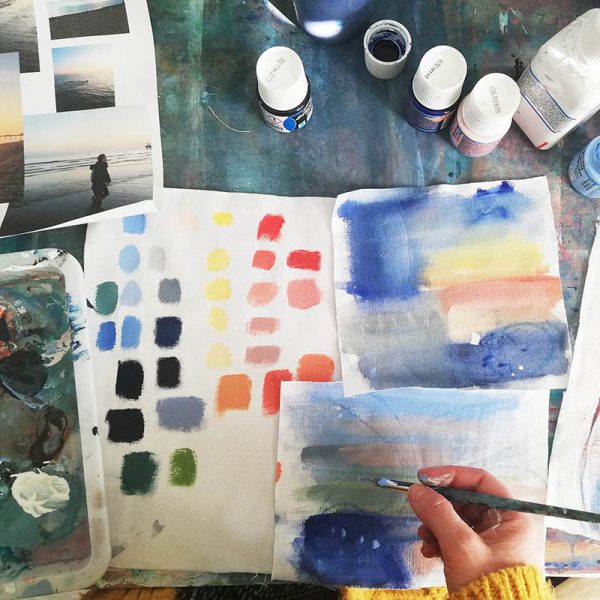
A note about water
When you’re painting onto raw (un-primed) fabric, water is your friend.
Applying water first softens the material, allowing the paint to be absorbed. You can choose to add extra water for a softer, more watercolour effect.
N.B. When it comes to mark-making on top, make sure you have a dry brush and no water, so that it does sit clearly on top, rather than merging in.
Layering up with lighter-weight fabrics
When you create a piece of textile art, you’re not limited to a single canvas – you can add as many layers as you like.
You may be familiar with appliqué (meaning ‘applied’ in French). This is where you use embroidery to attach a piece of fabric, perhaps using your stitches to highlight its shape.
A subtly different option is collage. Here you may use glue, or smaller, more hidden stitches, to build up an effect with a number of different pieces. They can be complementary or contrasting.
You can use coloured or patterned fabric, but I tend to create my own. I buy textured, white, cotton – such as broderie anglaise or ‘Dobby’ cotton – then paint it, adding my own detail and cutting or tearing it up.
Whichever approach you take, you can build up a gorgeously layered piece of art.

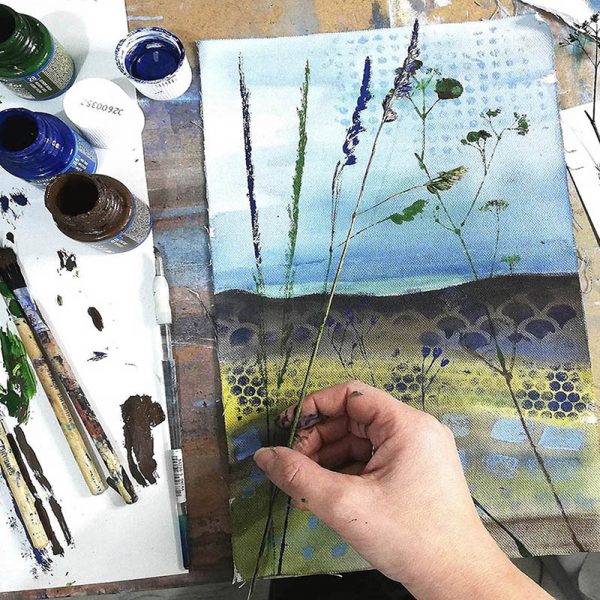
Adding lines, shapes and marks… with whatever takes your fancy
With a beautiful, textural background prepared, you can now choose to add another layer of detail.
But you don’t have to use a paintbrush.
Take a trip around your house – or head out for a walk – and gather a range of objects to experiment with.
You could scratch into wet paint with the pointed end of a feather, or create hatching with the edge of a credit card. You could have fun with monoprinting. There is where you apply paint directly onto an object – whether it’s a leaf, a feather or some bubble wrap – and make a one-off imprint. Or you could dip a sponge into paint and tap it gently onto the paper. The opportunities are endless.
And remember to experiment with different paintbrushes too.
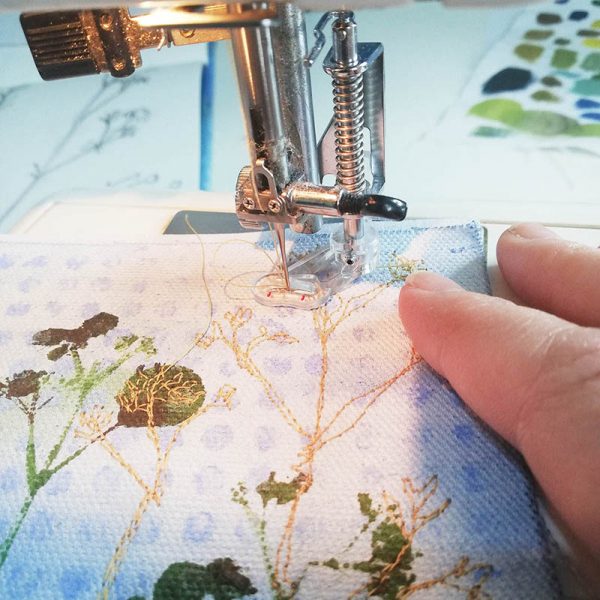
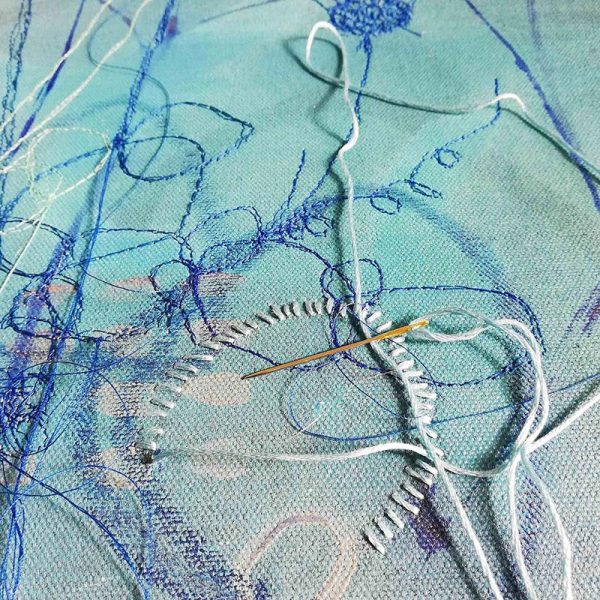
Add a layer of magic with embroidery
This is my absolute favourite stage of creating textile art.
I tend to work mainly with free motion embroidery. As you move your fabric through the sewing machine, mesmerising lines and shapes emerge. You can aim to ‘draw’ specific elements (usually plants and flowers for me), or simply allow it to flow and see what shapes appear.
If you enjoy hand embroidery, you’re likely to create more clearly defined shapes.
I personally like to keep things free, and often allow the ends of the threads to hang free when I’m finished.
However you approach it, embroidery adds detail, movement and interest that can transform your piece.
Now off you go!


